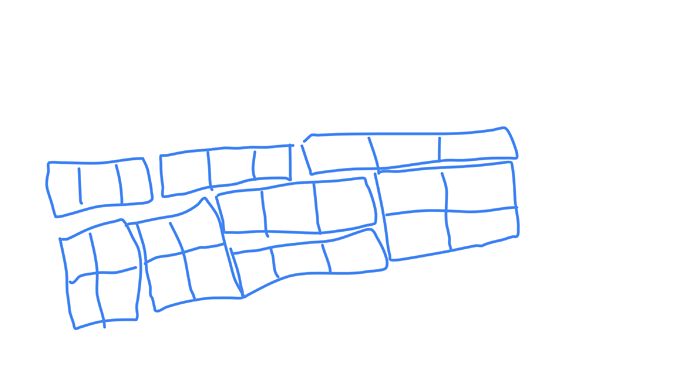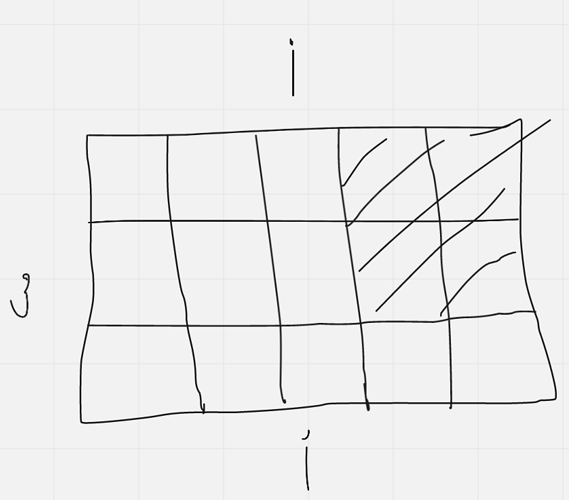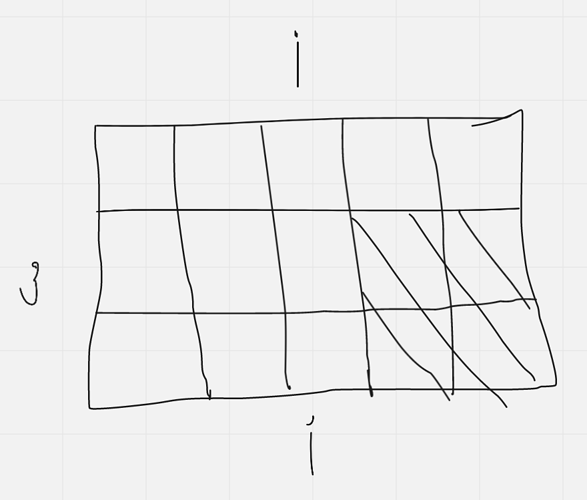Hello community,
I need some help in this question : CodeChef: Practical coding for everyone
I am not able to solve this question for 100 pts. I need help for the third subtask.
It would be of great help if you could explain the idea behind the third subtask or give some hints.
Thank You ![]()
Can you share your submission for the subtasks? Are you getting TLE or WA for larger constraints?
Hello @aneee004,
The constraints are not large. But, in the third subtask the value of k is different which leads to a different approach for that case. I am not able to think of that approach thats why it results in WA for that case.
My solution Link : CodeChef: Practical coding for everyone.
Thank You
I think the transition is:
dp[i] = dp[i - 1] + dp[i - 3] + 2*dp[i - 6]
Looks like your adding dp[i - 6] only once. It is twice because you can either choose to fill the bottom row with two 1 X 3 tiles, or the top row with two 1 X 3 tiles.
Also, why are you calling tiles function in tiles1? Shouldn’t you be calling tiles1 again? (inside your if).
Thank You for your response,
That was a typo in which I was calling tiles in tiles1 ![]()
My updated code : CodeChef: Practical coding for everyone
It still gives WA… ![]()
Can you tell why?
Wrong approach.
My code:
#include <bits/stdc++.h>
using namespace std;
const int mod = 1e9+7, size = 1e6+1;
int main()
{
ios_base::sync_with_stdio(0);
cin.tie(0);
cout.tie(0);
vector <long long> dp(size), f(size), g(size), h(size);
dp[1] = 0;
dp[2] = dp[3] = 1;
f[1] = f[2] = 1;
f[3] = 2;
g[1] = 0;
g[2] = g[3] = 1;
h[1] = h[2] = 0;
h[3] = 1;
for (int i = 4; i < size; ++i)
{
dp[i] = (dp[i-2] + dp[i-3]) % mod;
f[i] = (f[i-1] + f[i-3] + 2*h[i-3]) % mod;
g[i] = (f[i-2] + g[i-3]) % mod;
h[i] = (g[i-1] + h[i-3]) % mod;
}
int t, k, n;
cin >> t;
while (t--)
{
cin >> k >> n;
if (k == 1)
{
if (n % 3 == 0) cout << "1\n";
else cout << "0\n";
} else if (k == 2) cout << dp[n] << '\n';
else cout << f[n] << '\n';
}
}
If anything is not clear, ask me. Hopefully this will give you some hints.
The dp transitions are quite large but not difficult to figure out. Just remember you want to keep multiple dp states in each value.
Transitions
dp_{i,j} represents i columns filled with j tiles missing in the last column.
ans[i][2]+=ans[i-3][2];
ans[i][1]+=ans[i-1][2];
ans[i][0]+=ans[i-2][1];
ans[i][1]+=ans[i-3][1];
ans[i][2]+=ans[i-3][0]*2;
ans[i][0]+=ans[i-3][0];
ans[i][0]+=ans[i-1][0];
Yep. Just realized we can also fill it like this
Excuse the lousy drawing.
DAMN! That’s a lot of cases to deal with.
@everule1. Nice approach!
I’ll explain my solution.
Let’s say that f(i) is the number of ways that you can tile a 3 \times i block.
You can place a tile like this:
Or like this:
Or this:
Or this:
By symmetry, the last two are the same. If you tile it that way, you will be left with a 3 \times (i-3) block along with a 2 \times 1 block (because you’ll have to use a 1 \times 3 tile because you have to fill those gaps and you can’t do it with a 3 \times 1 tile and 2 \times 2 tile). Let’s say that the number of ways you can tile such a block is h(i-3).
Now f(i) = f(i-1) + f(i-3) + 2h(i-3)
I think that you can continue from here. Also, sorry for the terrible drawing.





